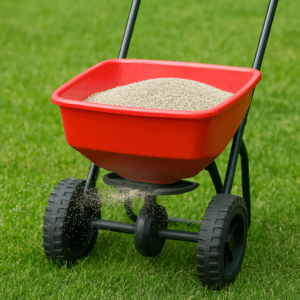How to Choose the Best Lawn Fertilizer for Spring

Spring is the season of renewal—and that includes your lawn. As temperatures warm and grass begins to grow, choosing the best lawn fertilizer is essential to promote lush, green, and healthy turf. However, with so many products on the market, it can be overwhelming to know which one is right for your yard.
In this guide, we’ll help you understand how to select the right fertilizer and when to consider professional lawn fertilization services to make the most of your spring lawn care routine.
1. Understand Your Lawn’s Needs
Every lawn is different. The first step in choosing the best lawn fertilizer is to assess your grass type, soil condition, and any visible signs of nutrient deficiencies.
Key Factors to Consider:
- Is your lawn cool-season or warm-season grass?
- Are there yellow or bare patches indicating poor nutrition?
- Have you recently performed a soil test to check pH and nutrient levels?
A soil test gives you a precise starting point for selecting the right fertilizer.
2. Learn the Numbers: N-P-K Ratio
Fertilizer labels display three numbers, which represent the percentage of nitrogen (N), phosphorus (P), and potassium (K). Each nutrient plays a key role in lawn health.
What They Do:
Nitrogen (N): Promotes green top growth and lush appearance.
Phosphorus (P): Encourages strong root development.
Potassium (K): Enhances overall stress tolerance and disease resistance.
For spring, a fertilizer with a higher nitrogen ratio (e.g., 20-5-10) is typically ideal.
3. Choose Between Synthetic and Organic Fertilizers
Both synthetic and organic fertilizers have benefits, and your choice depends on your lawn goals and values.
Comparison:
Synthetic Fertilizers: Fast-acting, precise formulations, great for quick results.
Organic Fertilizers: Natural ingredients, safer for kids and pets, improve long-term soil health.
Many homeowners combine both types throughout the season.
4. Consider Slow-Release vs. Quick-Release Fertilizers
Fertilizers also vary in how quickly they release nutrients.
Which One Is Right for You?
Slow-Release: Provides steady feeding over several weeks; great for consistent growth and reduced risk of burning.
Quick-Release: Delivers nutrients rapidly for an immediate green-up; requires careful timing and application.
For early spring, slow-release is often the better option to support long-term growth.
5. Know When and How to Apply
Timing and application methods matter just as much as the product itself. Apply your spring fertilizer when your lawn begins active growth and soil temps reach around 55°F.
Application Tips:
- Use a broadcast spreader for even coverage.
- Apply when the lawn is dry, then water lightly to activate the fertilizer.
- Avoid applying before heavy rain to prevent runoff.
Proper timing helps you get the most out of your fertilizer investment.
6. When to Call in Lawn Fertilization Services
If you’re not sure where to start—or you want consistent, professional care—lawn fertilization services are a smart choice. Pros assess your lawn’s unique needs and apply the right products at the right time.
Benefits of Hiring a Pro:
- Accurate lawn and soil assessments
- Custom-blended fertilizers tailored to your grass
- Scheduled treatments that align with your lawn’s growth cycle
Professional services save time and ensure optimal results.
Nourish Your Lawn the Right Way This Spring
Choosing the best lawn fertilizer for spring sets the tone for a season of healthy, beautiful grass. Whether you go the DIY route or opt for expert lawn fertilization services, giving your lawn the nutrients it needs early in the season pays off all year long.
📞 Not sure what your lawn needs? Contact Blue Duck Lawn Care today for customized fertilization plans that deliver real results!